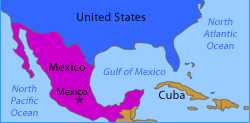Start date: 1994
Current total length: 70 miles
Official purpose: Prevention of illegal immigration
In a nation founded by immigrants and their children and symbolized by the Statue of Liberty, the topic of illegal immigration has long been controversial in the United States of America. Some Americans support illegal immigration as a source of economic vitality and argue that they perform jobs Americans are unwilling to do in ill-paid sectors such as agriculture, construction, and domestic services. Others blame illegal immigrants for taking jobs away from Americans and placing a burden on public services such as schools, hospitals, and prisons.
An estimated 8 to 12 million people are currently living in U.S. illegally. They are overwhelmingly Hispanic, with an estimated 70% of illegal residents hailing from Mexico. Immigrants in search of greater opportunity in the United States, they sneak illegally across the 2000-mile border with Mexico. Over one million are caught by US Border Patrol agents every year and deported back. Another million evade the patrols and settle in the country every year.
In 1994, President Bill Clinton launched Operation Gatekeeper to protect the San Ysidro checkpoint outside San Diego, the busiest port of entry in the country. Two high fences running parallel to each other were erected along 42 miles of the Mexico-California border. U.S. Border Patrol began helicopter surveillance by day and night. Night-vision cameras and hidden electronic sensors were deployed. The number of Border Patrol agents along the California-Mexico border was doubled. A similar operation called Operation Hold the Line was started later that year along the El Paso, Texas section of the border where a 30 mile fence was erected.
Rather than stem the overall flow of illegal immigrants into the U.S., the fencing and clampdown at the California and Texas borders has redirected migrants to ever more dangerous routes. The new border crossing point of choice is the deserts of Arizona, where the border is sometimes just delineated by a rusting wire cattle fence or marker post. Last year Arizona’s Border Patrol agents made 580,000 arrests, half the national total, as opposed to just 9% prior to Operation Gatekeeper. The tragic consequence has been the loss of life as immigrants attempting to walk for 3 to 5 days in Arizona‚s baking Sonoran Desert succumb to dehydration and exposure. More than 2000 immigrants have died along that stretch of the border since the mid-1990s.
Illegal immigration has become a prominent national issues, especially in border states such as California, Texas, and Arizona. In poll after poll Americans of both parties and all races have said over the past decade that they want less immigration, both legal and illegal. Their arguments are familiar: immigrants take American jobs; they are a burden on tax-payer provided services such as schools, hospitals, and prisons; and they commit crimes. But, many experts believe that ill-paid sectors such as agriculture, the hotel and fast-food industries, nursing and animal-slaughtering, rely on undocumented workers who are willing to perform jobs which Americans overwhelmingly refuse to do.
On January 7, 2004, President George W. Bush proposed a guest worker plan to legalize the presence of several millions of America‚s undocumented workers. It would provide illegal workers with temporary worker cards, renewable every 3 years for a maximum of 6 years, that would allow them to travel back and forth across the border without fear of being denied entry. Bush’s proposal has yet to come to fruition.
Sources: THE NATION – June 6, 2005; THE ECONOMIST – March 12, 2005; THE NEW YORK TIMES; US Customs and Border Protection Web site
- Previous: Saudi Arabia/Yemen



